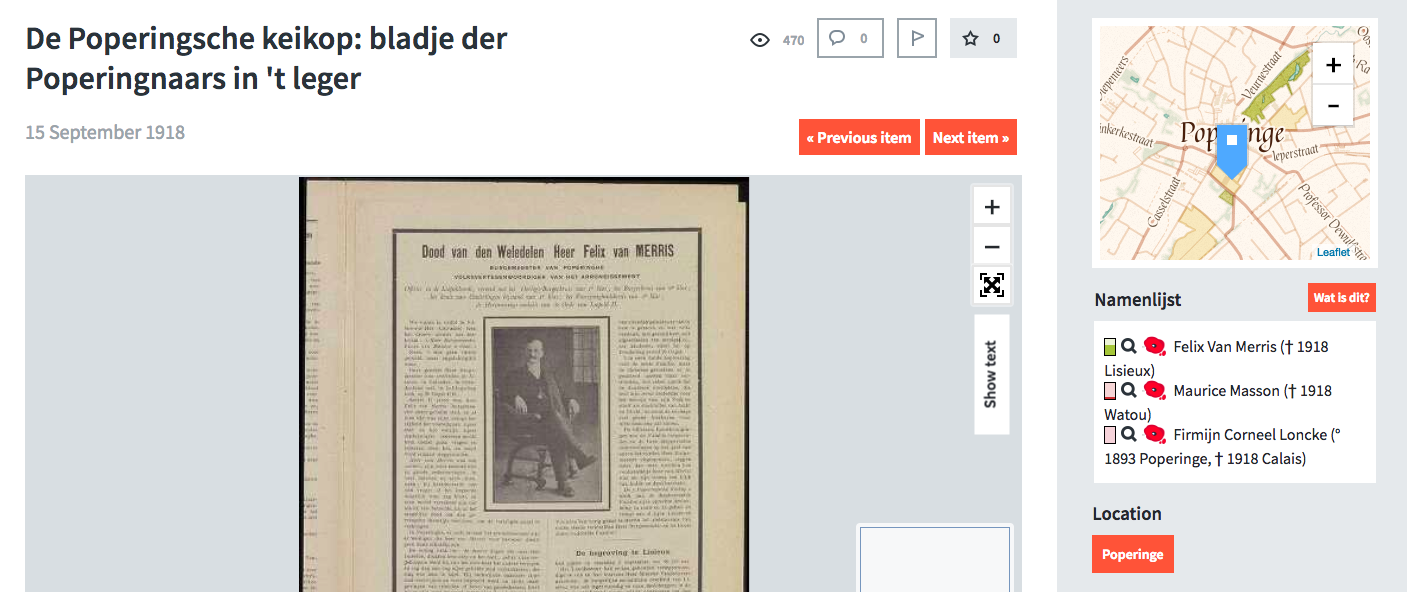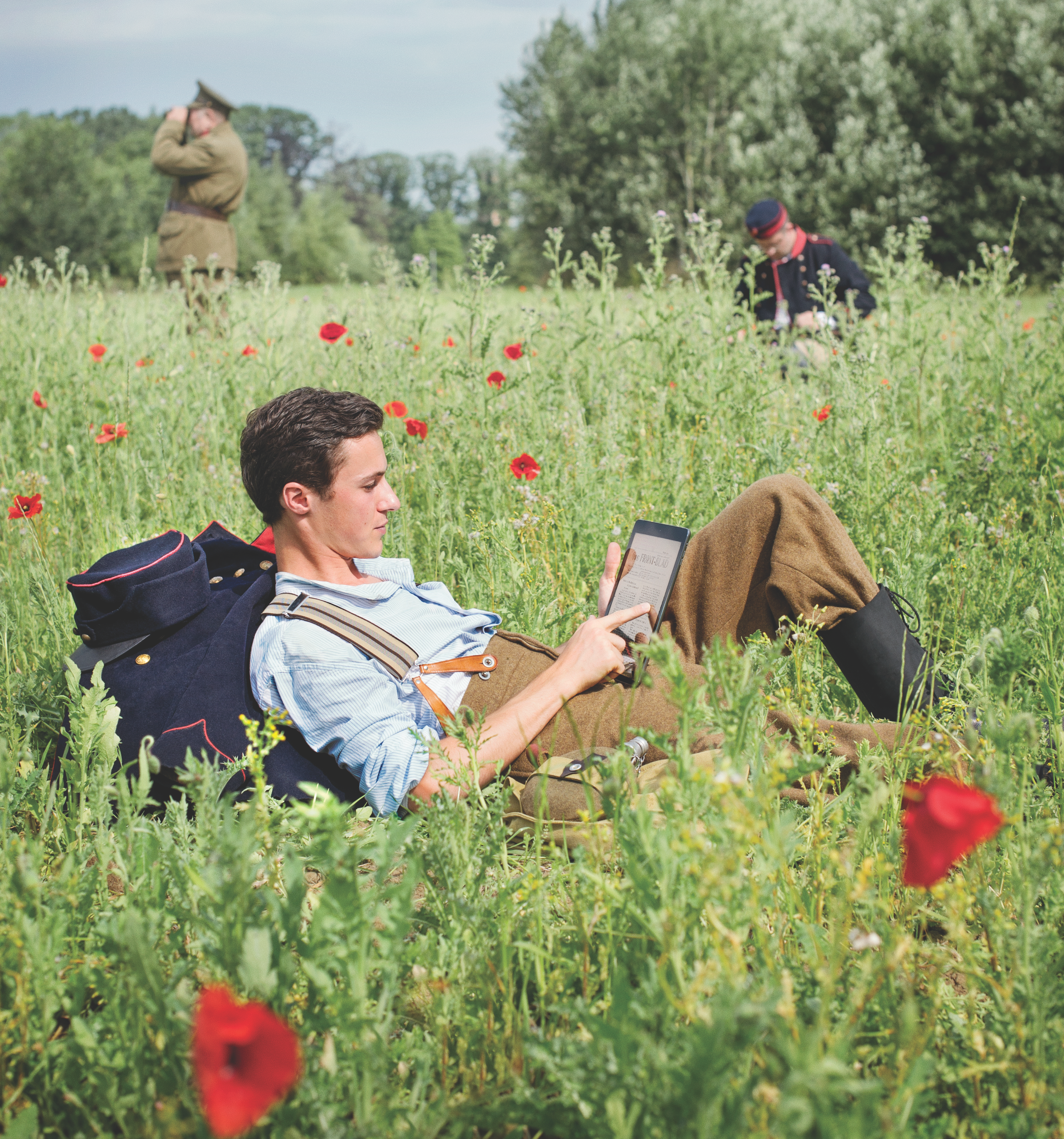A hundred years on, wartime newspapers are also available as linked data
On 11 November we celebrated the centenary of the end of the Great War. Although this marked the conclusion of four years of commemorations, it does not mean that we must end our research into this fascinating period. By making the newspaper collection in The Archive available as linked data, our aim is to give fresh impetus to the online findability of these newspapers and to increase their availability for research, education and reuse.
So what exactly is linked data? This is data which, despite being online in various places, is made available in such a way that it can be linked together by computer systems – and therefore without the need for human intervention. The newspaper publications, their metadata and their OCR can thus be linked in The Archive to other databanks such as Wikidata (the platform behind Wikipedia). Linked data does not imply that the data is also open. Conditions of use do apply to the OCR but not to the metadata.
>> Read more about linked data at viaa.be
By enriching the newspapers from News from the Great War with linked data, we can connect them to other information sources. To demonstrate the possibilities of this we have tested this linking ourselves, in partnership with In Flanders Fields Museum. Their Names List is an extensive and inclusive register of more than 600,000 victims: both Belgians who died in their own country or abroad, and non-Belgians who lost their lives here or were fatally injured before dying somewhere else. We wanted to learn what could be found out about these victims in the newspapers from the First World War in The Archive.
Thorough research yielded some 580,000 matches between the Names List and our newspapers. There were a total of 57,432 different victims mentioned on 87,512 pages. Around two thirds of the victims found lost their lives in Belgium, despite the fact that only just over half of the named dead were born here.
For this reason, we created a link between the two databanks, and the names from the Names List are now highlighted in our newspapers. In this 'Poperingsche keikop' for example, two victims are referenced: Felix Van Merris, Maurice Masson and Firmijn Corneel Loncke. Their names are highlighted on the right: this enables you to easily find their names in the newspaper and go directly to the Names List, where you will find more information about them.

>> How do I find a victim from the Names List in the News from the Great War newspapers?
This is just one of the many possibilities of linked data. The technique also results in improved findability through search engines. You will soon learn how you can get started with linked data yourself in one of our tutorials. However, linked does not mean that this data may simply be reused. The conditions of use still apply.

